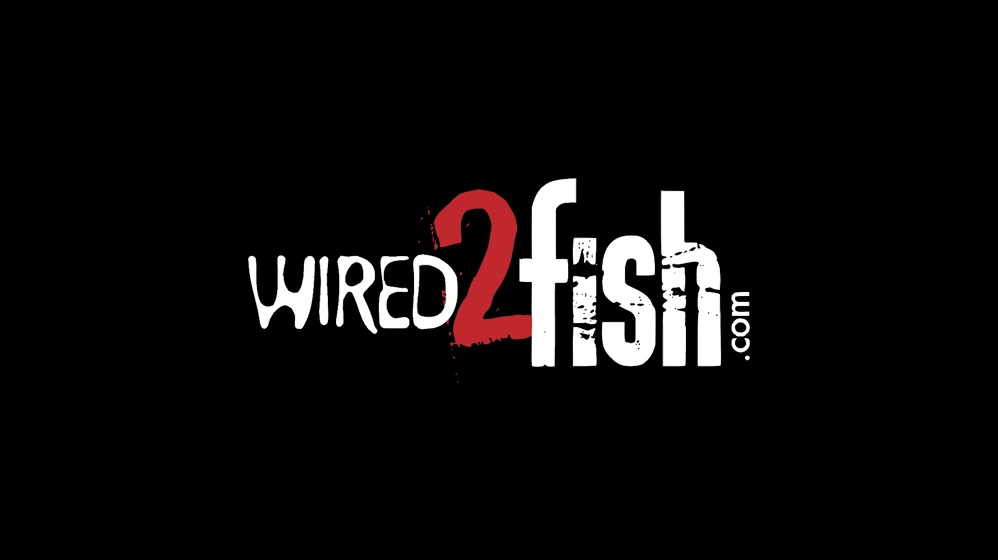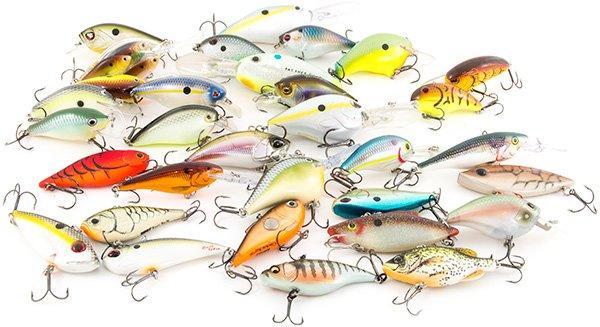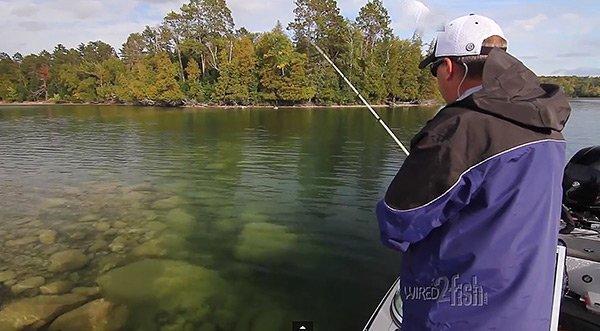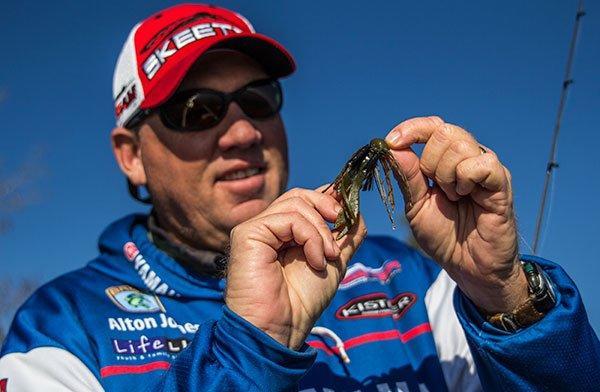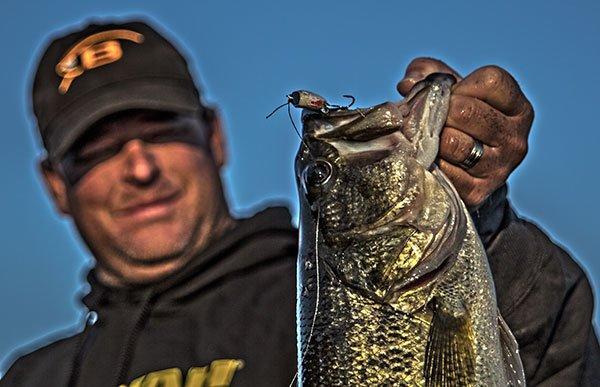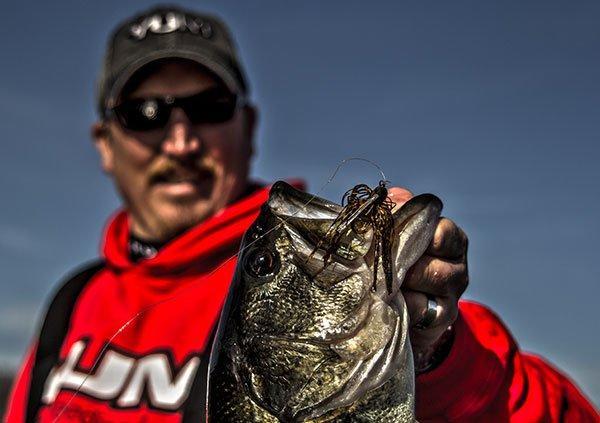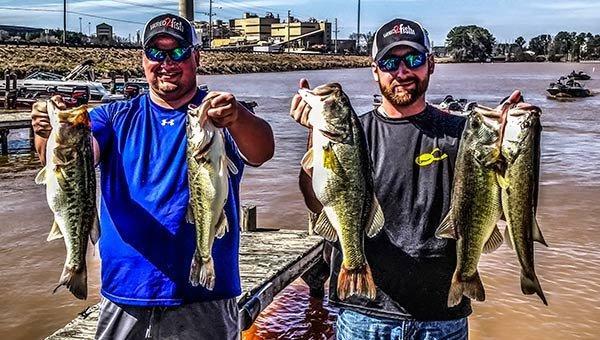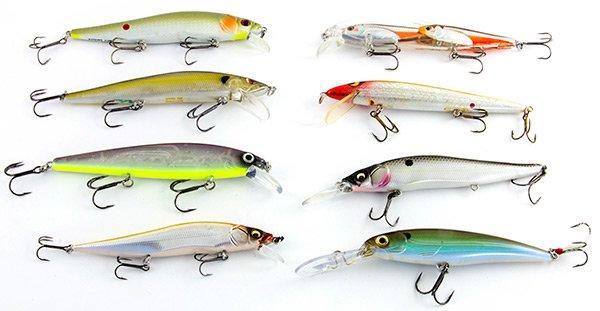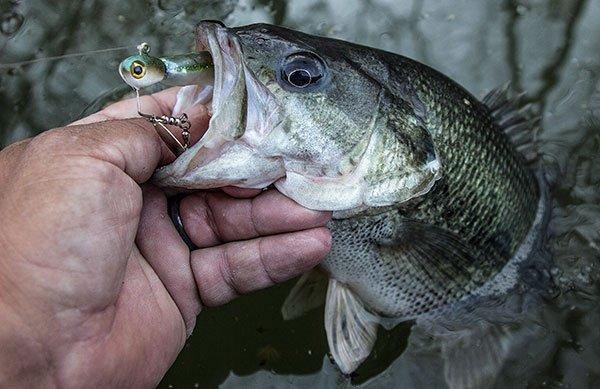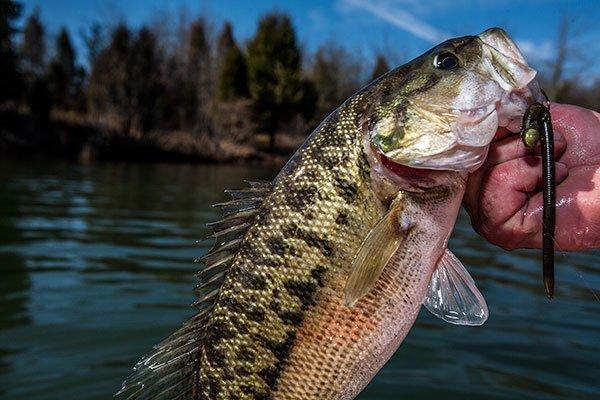Bass fishing crankbaits vary in size, shape, color, action, depth and more. This quick rundown will help you understand the differences in crankbaits for bass fishing and at the end of the article we’ll share some of our best tips for mastering crankbait fishing for bass.

Lipped versus lipless
Crankbaits can have lips, or they can be lipless. Lipless crankbaits get their action from the nose down attitude created by the placement of the line tie on the back of the bait and the slender body that will vibrate rapidly as water passes over each side. Usually they are filled with bb’s to make a loud rattling noise as retrieved. But in recent years, anglers have found lipless crankbaits with no sound are equally effective in clear water.
Lipless crankbaits generally come in sizes from 1/4-ounce up to 1-ounce. The nice thing about them is they can be fished in 1 foot of water or 50 feet of water. You just reel them faster or fish with lighter lures in shallow water and vice versa in deeper water. They are very effective ripped out of grass or bumped along a clean bottom. They can snag a little more than lipped crankbaits as we’ll explain in a moment.
Lipped Crankbaits can be broken down based on how deep they run on a standard retrieve. Most crankbait manufacturers based their diving depths on how well or deep the lure will run on 10-pound nylon monofilament or fluorocarbon line. They are generally classified as shallow, medium or deep diving crankbaits.
What causes a lipped crankbait to dive is the force of water against the lip as it is pulled through the water. The shape, angle and location of the line tie all factor into the angle the lure will dive and how deep it will dive. This can also impact how wide a wobble or tight a wiggle the crankbait can have. A lip on a crankbait can also act as a deflector that aids in keep the hooks from snagging in cover like tree limbs or stumps. The lip will hit something and kick the bait out and around the piece of cover. So you can fish lipped crankbaits through wood cover without getting them snagged even with their treble hooks.

Shape affects wobble or wiggle
The shape of a crankbait body can also determine its action. More rounded-bodied crankbaits usually have more pronounced wide wobbles while more flat narrow sided baits will have tighter wiggles. A wider wobble is often more effective when bass are aggressive, schooled up and competitive, usually when the water is warm. Conversely, a tight wiggle can often be more effective when the water is really cold and the bass aren’t apt to react to aggressive displacement by big bodied and big wobbling crankbaits. So a Rapala Shad Rap has dominated for many years in cold water where a Strike King 6XD, Spro Fat Papa and Bomber Fat Free Shad BDS7 all dominate when cranking offshore in the post spawn and summer.

Running depth created by lips
Shallow crankbaits include another variety of lipped crankbaits called square bills. We’ve talked in depth about square bills but they are know for a more flat edged short bill that deflects well off of cover but doesn’t dig water as much. These became extremely popular in recent years as a great technique for tempting shallow bass around wood and rock. But other shallow crankbaits produce as well and are marked by rounded stubby lips with a usually sharp angle off the nose of the bait.
As you start covering water in that 5-10 foot range, you’ll get into the more medium-diving crankbaits. Usually these baits will be 2-3 inches long and cover the water column well really from 0-12 feet. The baits will feature a longer lip than shallow divers and come more out of the nose of the bait.
As you start fishing deeper than 12 feet, the bodies and lips of the crankbaits get larger from 3-5 inches depending on how deep the lures run. You’ll need a bit stouter tackle to cast and retrieve these lures as the drag created by the larger lips can be arm tiring. You could hypothetically fish a deep diving crank bait in shallow water, but you’ll wear yourself out and really dredge up the bottom and also run the risk of more snags.
Matching line and diving depth
We like our crank baits to just tick the bottom. This is generally achieved by matching line size and running depth of a crankbait together. If you want a deep diver to not dive as deep you put it on 20-pound monofilament instead of 10-pound fluorocarbon. If you want a medium diver to get to its deepest depth, you put it on small diameter line like 10-pound fluorocarbon. We know guys who throw deep divers on 8-pound fluorocarbon to get them as deep as possible.
Many good anglers, will have several rods on their decks with different size lines and crankbaits to touch all different depths effectively. Kevin VanDam is one of the best and here he talks about his crankbait system.
Colors matter most of the time
It seems that crankbaits come in every color under the sun, but that doesn’t mean you need a tackle box full of every single color possible. Most good crankbait anglers recommend sticking with just a few crankbait colors like bright shad patterns, dull shad patterns, bluegills, crawfish and contrast patterns to cover the bases in bass fishing.
Starting with shad patterns, A bright pattern like Bomber’s Dance’s Citrus Shad and Strike King’s  Sexy Shad are staples when targeting bass in bright sunlight. But we also like the more muted shad patterns from Rapala and Bandit for those cloudy, clear water days.
In dirtier water you can’t go wrong with Spro’s Spring Craw or the staple black back, chartreuse sides. In the spring, we’ll always have a crawfish pattern tied on one of our rods. We love the old craw patterns on the Wiggle Warts and Flat A crankbaits for shallow bass foraging on crawfish. Bluegill patterns can have a time and place when you’re targeting bass feeding on bream especially in the post spawn and around docks.
This should give you a base understanding of crankbaits and the variety and differences.
For more on fishing crankbaits effectively we’ve compiled a list of our favorite crankbait articles. You might also want to read our plethora of crankbait reviews too. Maybe you just need to see proof on how effective crankbaits can be.
For a better idea of when to use each lure in your tackle box, check out our Bass Fishing Lure Selector Chart. For more information on bass fishing, see our How to Bass Fish Guide, When to Bass Fish Guide and Where to Bass Fish Guide.
There are a lot of crankbaits on the market now for bass fishing. Be sure to check out our crankbait reviews.
Master fishing crankbaits with these tips:Â
- Are You Fishing Lipless Crankbaits Correctly
- 5 Common Crankbait Mistakes
- Why You Should Sand Your Crankbaits
- How to Fish Crankbaits in Grass without Fouling
- A Thought Process on Shallow Cranking
- How to Fish Shallow Water Crankbaits in the Spring
- Pounding Summer Bass with Crankbaits
- 8 Mid-depth Summer Crankbait Secrets
- 6 Reasons to Crank Creek Ledges in the Fall
- 5 Early Summer Lipless Crankbait Spots
- Cranking Deep Wood in the Winter
- Cranking River Rip Rap
- 10 Ways to Improve Your Coldwater Cranking
- Small Crankbaits for Early Spring
- 5 Shallow Crankbait Colors for Every Situation
- How to Fish Crankbaits Offshore on Reservoirs
- When to Use Flat Sided Crankbaits
- 4 Tips for Better Crankbait Fishing
- Choosing Between Plastic and Wood Crankbaits
- 3 Tips to Better Crankbait Cadence
- How to Tune A Crankbait Like a Pro
- Â The Not-so-Secret Technique of Long-Lining Crankbaits
- How to Fish for Bass with Finesse Crankbaits
- Is this the Best Cold Water Crankbait Ever?
- 4 Tips to Trigger Bass with Crankbaits
- Worming Crankbaits through Wood Cover
- Why You Should Crank Fast For Bass


